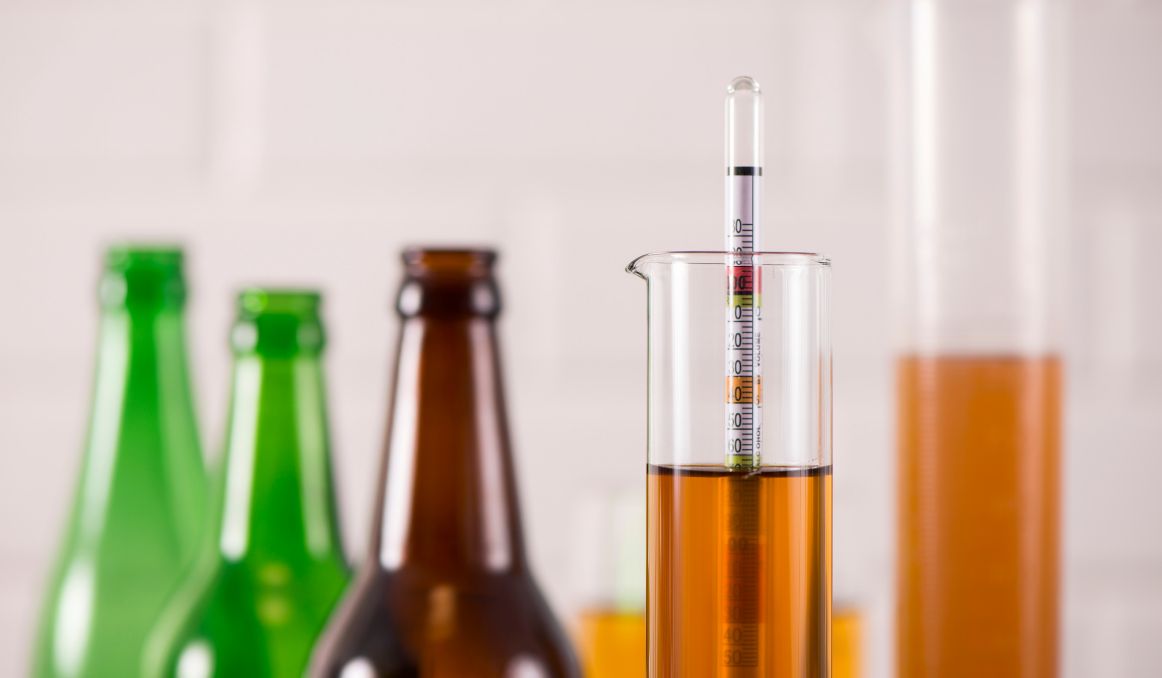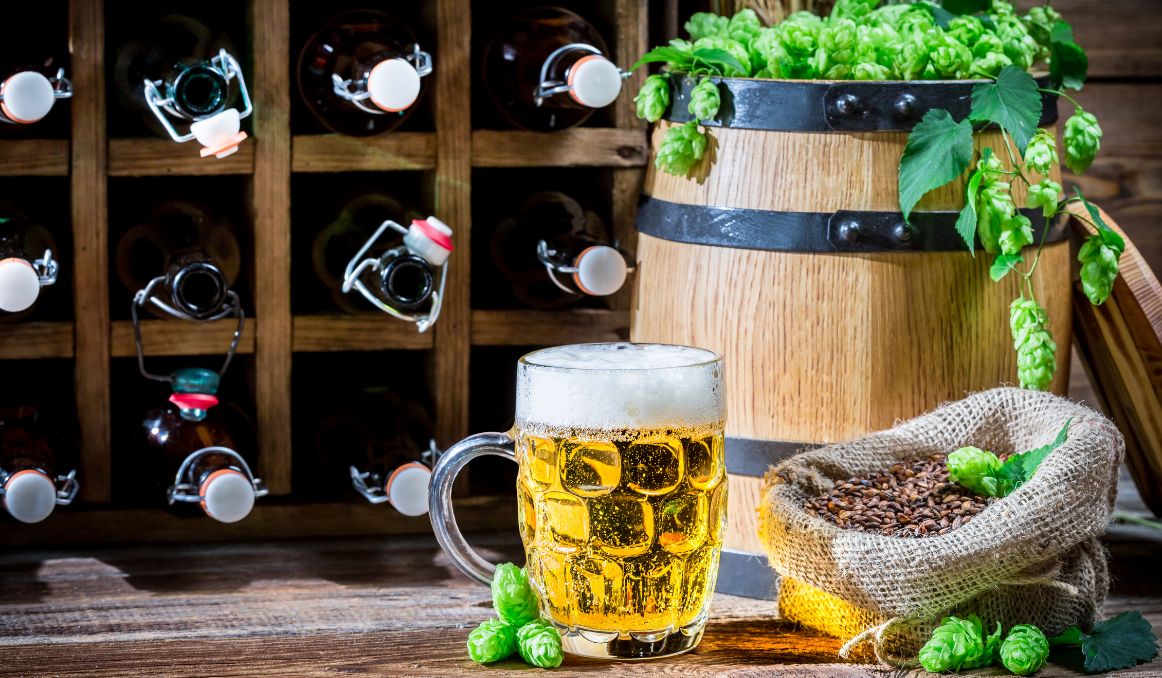What Temperature Should Beer Be Stored At? Things to Know
50 to 55 Degrees Fahrenheit. That’s the best answer to the commonly asked question “what temperature should beer be stored at?” Think of a beer or wine cellar, nice and cool, but not ice cold. Indeed, for centuries, this is how beer was stored by brewers, deep in a cellar, underground, and even in caves.
Why store beer like that?
Top 10 Things to Know about Proper Beer Storage Temperature

1. Flavor
One of the first things you’ll notice if your beer has been improperly stored, either too hot or too cold, is that the flavor is off. Too warm and the beer loses its complexity. Too cold and your beer tastes flat.
2. Aroma
Likely even before you taste your beer, you might notice an off scent. Beer that has been exposed to too much light may even end up with a skunky scent you cannot get rid of. The aromas that come from yeast fermentation and the addition of hops require a perfect beer storage temp to remain at their best.
3. Balance
You’re really looking for a perfect balance between flavor and aroma because your nose will tell you what you’re about to taste and then have a huge impact on your actual taste buds. The ideal storage temp will ensure that perfect balance.
4. Alcohol Content
Slushy beer will intensify the alcohol content of your beer, making it much stronger when you drink it, affecting the alcohol content of the liquid that remains. It will also become grossly distasteful. So don’t store beer in the freezer.
5. Nutrients
Beer that gets too hot will accelerate the aging process of your beer and place an increased demand on the nutrients, ultimately depleting them, not to mention making your beer taste off. So don’t store beer at warm temperatures. Ideally, get a beer fridge.
6. Shelf Life
Again, freezing or heating your beer up will speed up the aging process of your beer and affect its shelf life. So what could have lasted months, and even years in the case of some beers, will now be shortened to weeks or days. Cold and dark is the go to storage for extended shelf life.
7. Protect from UV Rays
As mentioned above, exposing your beer to UV Rays and other light can give it a skunk smell that won’t go away no matter how hard you try. It can also speed up the aging process and kill your nutrients. Even if you can’t always keep it cold, and even if you don’t have a beer fridge, you must always keep your beer in a dark place.
8. Room Temperature Is No Longer Optimal
Once upon a time, brewers stored their beer at “room temperature.” Indeed, you’ll find many people suggesting that is precisely how some beer must be served. Just look up Guiness on the internet and you’ll find tons of advice to that extent. But the truth is, room temperature only made sense when most of our rooms hovered in the 50s. Today, most rooms are kept in the high 60s to low 70s. You definitely don’t want that room temperature beer.
9. Serve Beer on the Colder End – But Don’t Freeze!
As a rule of thumb, it is a good idea to store your beer cold, in the low 50s, and then serve it in a room temp glass. That way, as your beer warms up, you can still enjoy its complexity of fragrance and flavor. You don’t want to keep it ice cold, and you don’t want to warm it up too fast. And you certainly don’t want to freeze it!
10. Adjust According to Taste
Of course, some beers are better served colder – wheat beers and lagers seem to go down smoother in the 40s. And other beers are better warmer – barleywines and porters tend to taste better in the higher 50s and even lower 60s. If you’re an avid beer drinker, experiment. See what works for you and make note of it so you can keep consistent.
What Not to Worry About with Beer
While beer storage temp is critical to good taste, aroma, and several other elements of your beer experience, there are some things you don’t have to worry overmuch about.

Don’t worry about storing bottles upright
There is a fairly new trend of corking beer bottles, which has led many to believe they must store their bottles laying down, the way we do with wine bottles.
This is not necessary. You can store them upright, sideways, or upside down. Beer does not typically have the sediment and settling issues that wine does, so the direction of your storage is not essential.
Don’t worry about storing it at store temp
It’s likely the market you buy your beer from has no idea what proper beer storage temperature is, so don’t worry about mimicking their storage temperatures. Beer can get a little colder and a little warmer without permanently affecting the taste.
Your goal in beer storage is primarily one of serving it at the proper temperature.
Warm beer won’t skunk
Nope. It’s only light that does that. Back to the note about market storage above, if your beer gets a little warmer than you’d like, just move it to a cooler place or adjust the temp on your fridge. You don’t have to worry about long term damage to the scent or taste because of a little temperature adjustment during storage.
In the end, the issue of what temperature should beer be stored at is one of taste and character. If you are a tried-and-true beer connoisseur or beer aficionado, the temperature will matter greatly to you, and you will play around with different temps for different beers. Or you will, most likely, invest in a beer fridge for storing beer properly.
If not, if you just like a good cold beer, and you’re not too picky about complexity of flavor and aroma, just keep them all at a cool 54 degrees Faherenheit, and enjoy your frosty beverage at your leisure, without a second thought.
Cheers!
Passionate about the beer and/or wine making process? So are we! If you’re interested in finding out how you can use our technology to control fermentation and monitor your yeast, save work hours and improve the cost-efficiency of your business, drop us a line at [email protected] or check out our product pages:
- Oculyze BB 2.0 (Better Brewing) Yeast Cell Counter App + Hardware
- Oculyze FW (Fermentation Wine) Yeast Cell Counter App + Hardware
Sources:


